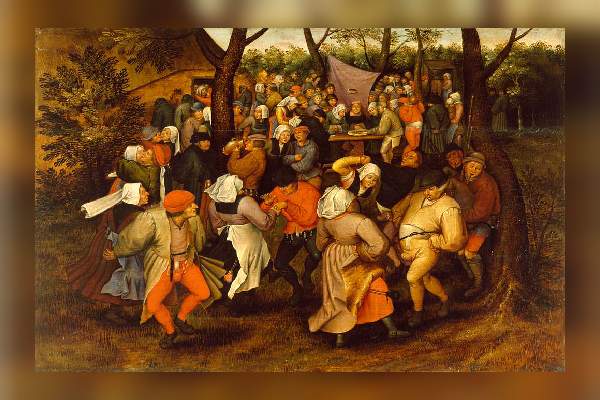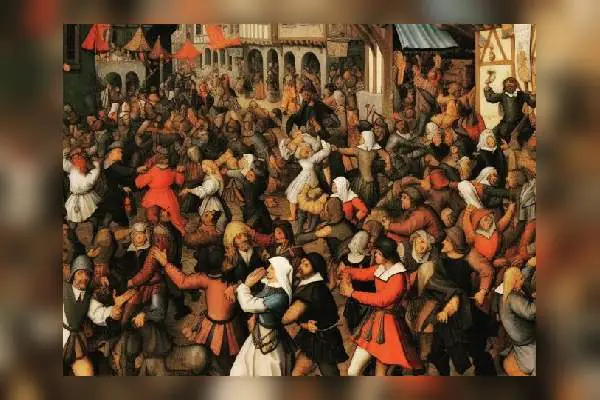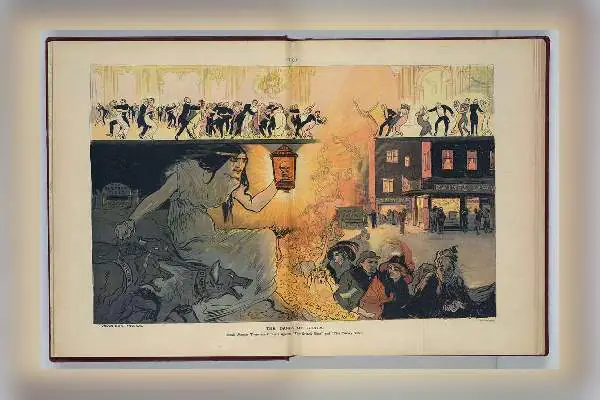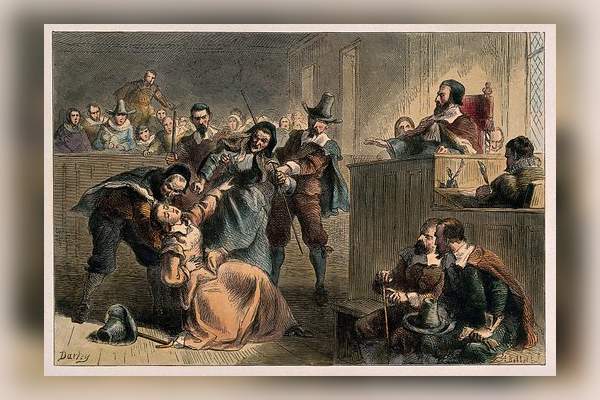The Mysteries Of The Dancing Plague of 1518: An Unexplained Epidemic

Dancing Plague of 1518. Image Source: Picryl
It is said that dancing is one of the joys of life, but the Dancing Plague of 1518 is such a mysterious epidemic that took around 100 people’s lives. Although not deadly as the Covid-19 pandemic, the dancing fiesta still continues to puzzle historians, physicians, and psychologists.
The incident took place in July 1518 when a woman named Frau Troffea started passionately dancing in the streets of Strasbourg, France. Surprisingly dozens of people joined her within a week, and the numbers increased rapidly, leading to an anomalous and hostile dance hysteria.
The “plague” involved a sudden outbreak of a dancing fest where 400 people danced uncontrollably and involuntarily for days or weeks. No doubt, the outbreak was abnormal and incapable of explanation. Stay with us to know more about one of the most mystifying cases in history.
The Inception of Death Dance
The instigator of the bizarre medieval phenomenon called dancing mania was started by a German woman named Frau Troffea, who began dancing in the middle of the street. She danced uncontrollably until collapsing from exhaustion.
After gaining some physical strength, Troffea resumed the bizarre activity despite the punishing heat. Within a week, over 30 people joined the dancing woman, and they kept going for weeks, passing the point of injury.

Dancing Plague of 1518. Image Source: Instagram.
The dancers became restless without any sleep, and many collapsed due to exhaustion, dehydration, and some showed signs of heart attacks. As per witnesses, some reportedly danced until they died from extreme physical distress and tiredness. From the continuous dancing, people were dazed and unable to control their movements.
In the beginning, the local administration, baffled by the situation, tried to encourage the dancing. They believed the wilderness would slowly ease up and even set up stages and hired musicians to accompany the dancers. In contrast to their belief, their efforts worsened the situation as more people joined the frantic dancing.
Apart from France, similar uncontrolled dancing plagues were recorded in Germany and other regions of the Holy Roman Empire in the medieval era. However, the death toll varied depending on different historical accounts.
ALSO READ: Everything About 1676 Bacon’s Rebellion.
Dancers’ Liberations from Sins
Several claims suggest that the Strasbourg administration even refurbished the guild halls (meeting halls) to accommodate the comfort of the dancers and musicians. However, more people joined, forcing the council to ban public dancing.
It is even believed that the people danced in fear as they believed it was a punishment from Saint Vitus. Likewise, groups of people joined to be free of sin. Worn out by the situation, the council was forced to ban the music, and the participating dancers were ordered to go to the shrine of Saint Vitus.
They were ordered to wear red shoes sprinkled with holy water and painted crosses on the top and soles. They also had to hold small crosses in their hands, and incense (scented balms) and Latin chantations were part of this ritual.
Then forgiven by Vitus, word was spread of a successful ritual, and by September 1518, the plague had ended. Within a week, the suffering people had seeped. Therefore, the plague lasted from mid-July to late August or early September.
You don’t want to miss reading about The Enchanting Gullah Geechee Culture.
Were Physicians Guilty of Enhancing the Outburst?
In 2012, a German historian named Gregor Rohmann presented a new theory stating that the dancing epidemic was a concept of illness based on religious ideas. According to him, the people who danced involuntarily performed the act out of the feeling of being abandoned by God. For a long time, it was believed to be a divine punishment or a curse from god.
Local physicians were asked to investigate because the authorities could not know the root cause. The supernatural and astrological explanations were dismissed. But they credited the dancing fever to natural causes such as excitement and hot fever. Additionally, the physicians with the local authorities hired musicians and redecorated a new hall for the people to keep dancing.
The action backfired horribly as the situation inclined to a supernatural explanation. Most onlookers saw the movements as a damnation.
Dance Mania’s Mysteries: Widely Accepted Modern Theories
The exact cause of the Dancing Plague of 1518 remains a mystery, with modern experts disagreeing the supernatural cause as the main reason. However, several theories have been suggested, of which one theory said possible grain poisoning (ergot fungi) could be the culprit.

Dancing Plague of 1518. Image Source: Picryl.
Another widely accepted theory was of American medical historian John Waller, who, in his several papers, stated that the dancing plague was a form of mass psychogenic disorder. In an article, Waller wrote that this type of bizarre event provides a lesson, and the dancing plague of 1518 reminds us that the symptoms of mental illness are not fixed.
In conclusion, it’s not uncommon for partygoers to dance for a few days with an extra break. However, the medieval dancing plague of 1518 reveals the extremes to which fear and supernaturalism can lead us.
What was the dancing plague of 1518? (2015, August 31). HISTORY.
Interesting, A. T. (2022). How The Dancing Plague Of 1518 Left 100 People Dead. All That’s Interesting.
Bauer, P. (2017, May 18). Dancing Plague of 1518 | Facts & Theories. Encyclopedia Britannica.
Reporter, G. S. (2018, July 24). Keep on moving: the bizarre dance epidemic of Summer 1518. The Guardian.
Narula, B. (2022, January 7). The Plague That Made People Dance Themselves to Death. Medium.
Techie, U. (2023, February 21). Frau Troffea and the Medieval Curse of Uncontrollable Dancing. Medium.
Dancing plagues and mass hysteria. (2009). BPS.
Did you notice an error ?
Please help us make corrections by submitting a suggestion. Your help is greatly appreciated!











